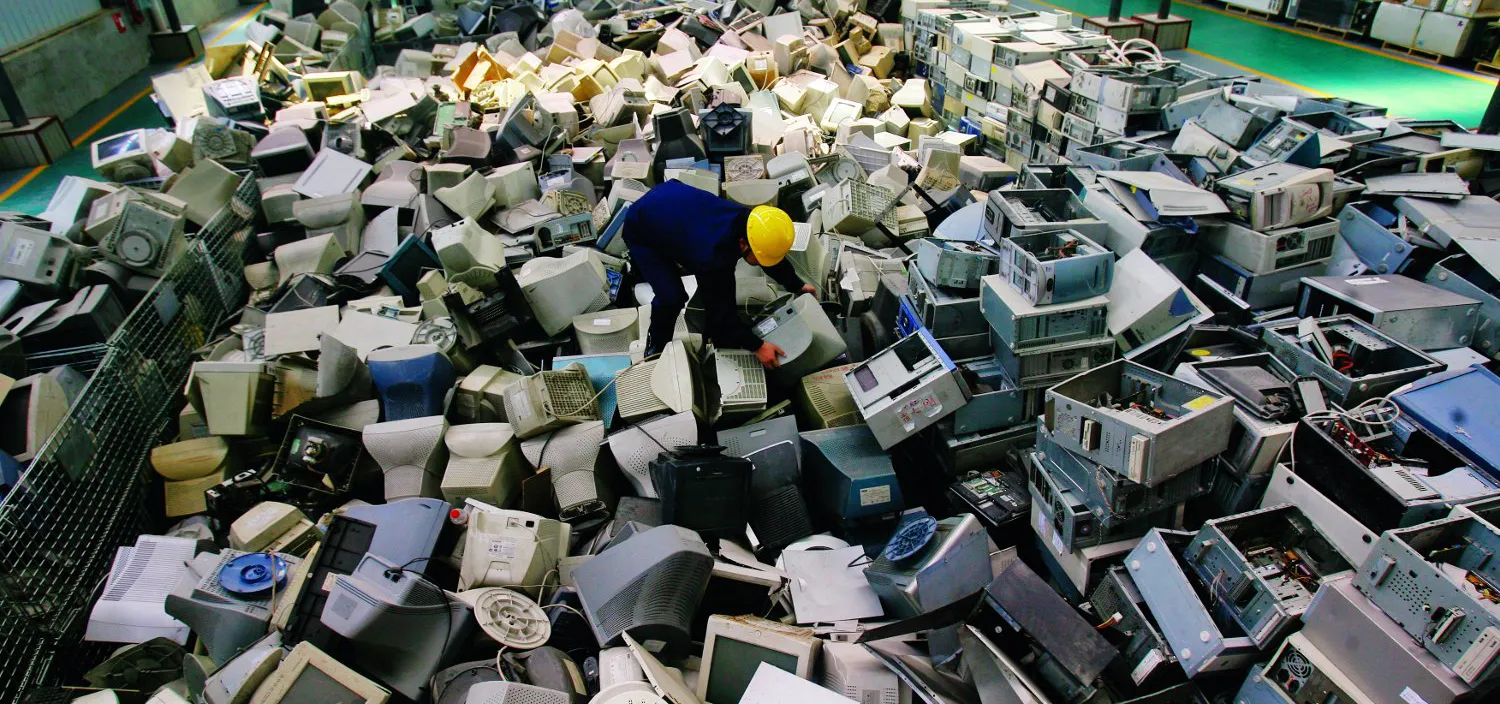China is the number one producer of electronic waste, but there are solutions
How many phones have you had in the past five years? Televisions? Laptops? Gadgets with lithium batteries? As convenient as these technological advancements may be, they leave behind a serious problem : e-waste. And this is especially problematic for China, where e-waste has more than doubled in volume over the past five years.
According to a recent report by the Sustainable Cycles (SCYCLES) Program funded by the Japanese Ministry of the Environment, the Chinese mainland is the largest contributor of e-waste in the world. At a rate of growth of 107 percent (or 6.7 million metric tons of e-waste)per year over half a decade, China needs a solution.
Lead, cadmium, chromium, and brominated flame retardants, along with the ubiquitous PVC plastics, are all severe dangers to the environment, according to the World Health Organization. The most common—and usually illegal—method for recycling e-waste is chemical leaching, often known as an acid bath. Those who want to get copper from a circuit board, for example, might use sulfuric acid to dissolve the circuit board, a process that can damage the environment for generations.
Perhaps the most startling problem is the human element, the waste disposal workers and collection agents put at constant health risk by old phones that people simply chuck in the bin. The town of Guiyu, Guangdong province, has been garnering headlines for years due to the massive amount of e-waste passing through its gates. Called an “e-waste nightmare” by Greenpeace, the area has been processing China’s (and the world’s) e-waste since 1996.
Reports of health problems, poorly ventilated workshops, and 80 percent lead poisoning rates among children abounded until, after a decade of recycling China’s e-waste, the authorities moved the recycling facilities to an industrial park in 2016. Lai Yun, a campaigner for Greenpeace Hong Kong, was reported as saying, “Guiyu is a lesson that a war on pollution that China has now undertaken is best fought through preventing the pollution in the first place.”
While this certainly means that the town of Guiyu has gained a measure of safety, the nation’s predilection for disposable electronics continues to grow. Part of the problem is the throw-away culture of modern consumerism. Phone screen cracks? Eh, due for an upgrade. Your cheap flat-screen goes a bit wonky? Get a bigger one. Electronics in China have gotten cheaper and cheaper as millions more connect to the internet every year.
But the materialism and technology that caused the e-waste problem may yet provide the answers. You see, there’s gold in them thar iPhones.
The people of Guiyu and Hong Kong—importing e-waste from around the world—aren’t ripping cadmium from hard drives for fun (and certainly not for their health); these devices require chemically intensive recycling procedures to gather valuable materials, such as gold, silver, copper, and palladium. Today, companies are realizing they can make a buck by recycling these forgotten electronics safely.
Baidu is partnering with the UNDP to come up with a recycling app that will hopefully make recycling e-waste easier—and what better way to do that than with an app? Users send a photo of their gadget through the app, Baidu Recycle, and then are given a quote for what a recycler might offer for the device. The photo and gadget details are then uploaded to a database of interested e-waste recyclers who then pay for and pick up the device.
As of January 2017, the app, now available in 22 cities, helps dispose of 5,900 electronic items a month. It’s a drop in the bucket for China’s 6.7 million metric tons, but it’s a start.
Practically no country is immune from this new pollution pile-up, an all too predictable product of modernity, but China arguably suffers the most because it isn’t just the world’s biggest consumer and producer of e-waste, but also the world’s largest dumping ground. This is at least in part due to Hong Kong.
Per capita, Hong Kong generates the most e-waste in the world: 21.7 kilograms per person per year. Ports around Asia ship their e-waste to Hong Kong, which, unlike the Chinese mainland, does not prohibit the import of e-waste products. Then, through a policy loophole, the waste can be legally moved into China. A UN report suggested that much of this waste originated in North America.
From the shores of North America, to the ports of Asia, to Hong Kong, to a landfill on the Chinese mainland—e-waste is showing no sign of slowing. Some of the answers can be found in apps, others in moving recyclers to safer and more efficient facilities. Other solutions could involve legislation, but the rate at which e-waste is piling up should concern any environmentally conscious consumer.
E-Trash Talk is a story from our issue, “Wildest Fantasy.” To read the entire issue, become a subscriber and receive the full magazine.












